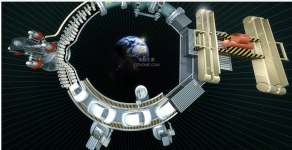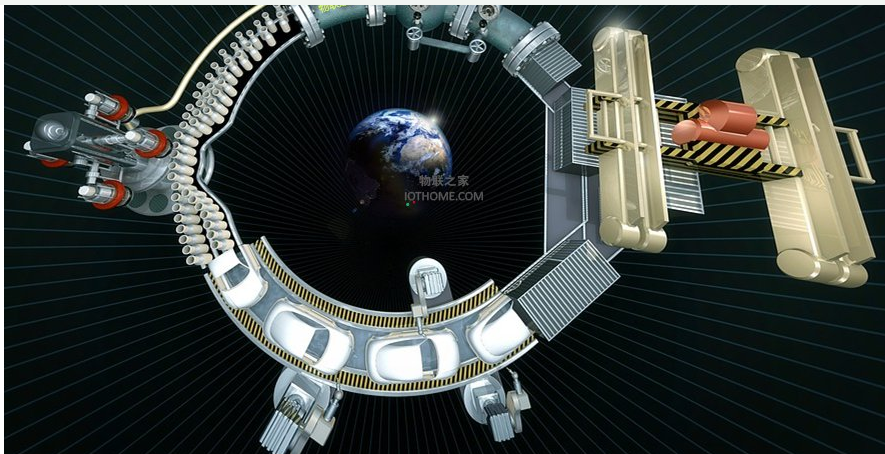
Use Industrial Internet of Things and RFID for inventory management
[ad_1]
According to recent research, only 33% of manufacturers use inventory management software, and the remaining 67% still rely on excel or paper-based methods. They spend an average of 18 hours a month writing down inventory details on paper, and then entering information about each item into a spreadsheet. However, labor intensity is not the only problem-Marketwatch estimates that 88% of spreadsheets contain incorrect information.
The good news is that with the help of Industrial Internet of Things (IIOT) and RFID, manufacturers can solve problems related to manual methods and understand their inventory status in real time.

Smart inventory method: what’s behind it?
In an inventory management solution based on the Industrial Internet of Things and RFID, any single inventory item to be tracked will be affixed with an RFID tag. Each label has a unique identification (ID), which contains the coded digital data about the inventory items, such as model number, batch number, etc. The tag is scanned by an RFID reader. After scanning, the reader extracts the tag’s ID and transmits it to the cloud for processing.
In addition to extracting the ID of the tag, the cloud also receives data about the location of the reader and the reading time. Based on these data, the cloud uses the corresponding ID to point out the location of the items, visualize the results, and display real-time updates of the movement of inventory items to solution users, so that they can use their smartphones or laptops to monitor inventory in real time from anywhere.
Let us have a deeper understanding of the technologies that enable intelligent inventory management.
RFID
RFID (Radio Frequency Identification) system is mainly composed of three parts: RFID tag, RFID antenna and RFID reader.
·RFID tags
The ID of an RFID tag contains information about a specific object. It can be attached to any physical surface, including raw materials, finished products, packaging, crates, pallets, etc. In an industrial environment, passive tags are mainly used, that is, tags that do not have a built-in battery. This tag is relatively cheap, but it needs the energy of the reader to transmit data.
·RFID antenna
The RFID antenna receives the radio waves from the reader, provides energy for the operation of the tag, and forwards the radio signal from the tag to the reader.
·RFID Reader
The RFID reader can be fixed or hand-held. It uses radio waves to read and write tags. The reader captures the ID information written in the tag storage library and transmits them to the cloud together with the data of the reader location and reading time.
Industrial Internet of Things
The role of the Industrial Internet of Things (IIOT) in inventory management can be attributed to the conversion of data obtained by RFID readers into meaningful insights on the location, status, and movement of inventory items, and provide users with corresponding output. For example, based on the inventory quantity and location data, machine learning can predict the amount of raw materials needed for the next production cycle. (Source of the Internet of Things) The output provided by the IoT system can take many forms: if any single inventory item is lost, it can send an alert to the user and notify the need for supplementary materials, etc.
In addition, inventory management solutions based on the Industrial Internet of Things can be integrated with other systems (such as ERP) and share data with other business departments.
For example, because the value of inventory may be an important part of a company’s assets, inventory data is crucial for the accounting department to ensure that the company’s annual report and tax returns are accurate.
What are the benefits of the IoT approach?
Inventory management based on the Internet of Things lays a solid foundation for the digitization of the manufacturing ecosystem and provides many benefits, including:
·Automation of inventory tracking and reporting
With RFID and the Industrial Internet of Things, inventory managers do not need to spend time on manual tracking and reporting. Each project will be tracked, and its data will be automatically recorded in a big data warehouse. Automated asset tracking and reporting can save 18 hours of working time per month and reduce the possibility of human error.
Continuous visibility of the number, location and movement of inventory items
The IoT-based inventory management solution provides manufacturers with accurate visibility into the production process of raw materials and components, work-in-progress and finished products by providing real-time updates of item status, location and movement, so that inventory managers can view individual inventory items. Enter or leave a specific location at any time.
·Optimize inventory
The more warehouse managers understand inventory, the more likely they are to place the right items in the right place at the right time. With real-time data on the number and location of inventory items, manufacturers can reduce inventory while meeting the needs of customers at the end of the supply chain.
·Identify the bottleneck in operation
With real-time data on the location and quantity of inventory items, manufacturers can reveal bottlenecks in the production process and identify machines with lower utilization rates. For example, if part of the inventory tends to accumulate in front of the machine, the manufacturer will think that the machine is underutilized and therefore requires special attention.
·Optimize delivery cycle
By providing warehouse managers with available inventory quantities and machine learning-driven demand forecasts, solutions based on the Industrial Internet of Things can enable manufacturers to shorten lead times. (Source of the Internet of Things) For example: RFID-based inventory management solutions enable Zara to design a piece of clothing from design to manufacture and deliver it to a smart warehouse in just 10 days.
What are the challenges and limitations?
The use of RFID technology may be restricted by the following factors:
· Since RFID tags can be affixed to items that are still being processed, manufacturers must ensure that the tags will not affect the production process.
· Although RFID readers can scan most non-metallic materials, they may still have difficulty scanning liquids and metals. If you try to scan the water tank or metal plate, the label reading may be inaccurate.
The price of tags ranges from 5 cents to 10 dollars per piece, and the price of RFID readers is as high as 3000 to 20000 dollars per piece, including installation and configuration. Therefore, the price of the product should be high enough so that the tag and reader can recover the cost.
Summarize
Inventory management and asset tracking solutions based on the Internet of Things and RFID provide continuous visibility into inventory by providing real-time information. It helps to track the precise location of raw materials in the production process of finished products and finished products. Therefore, manufacturers can balance existing inventory, increase machine utilization, and shorten lead times, thereby avoiding the hidden costs of less efficient manual methods.
[ad_2]



